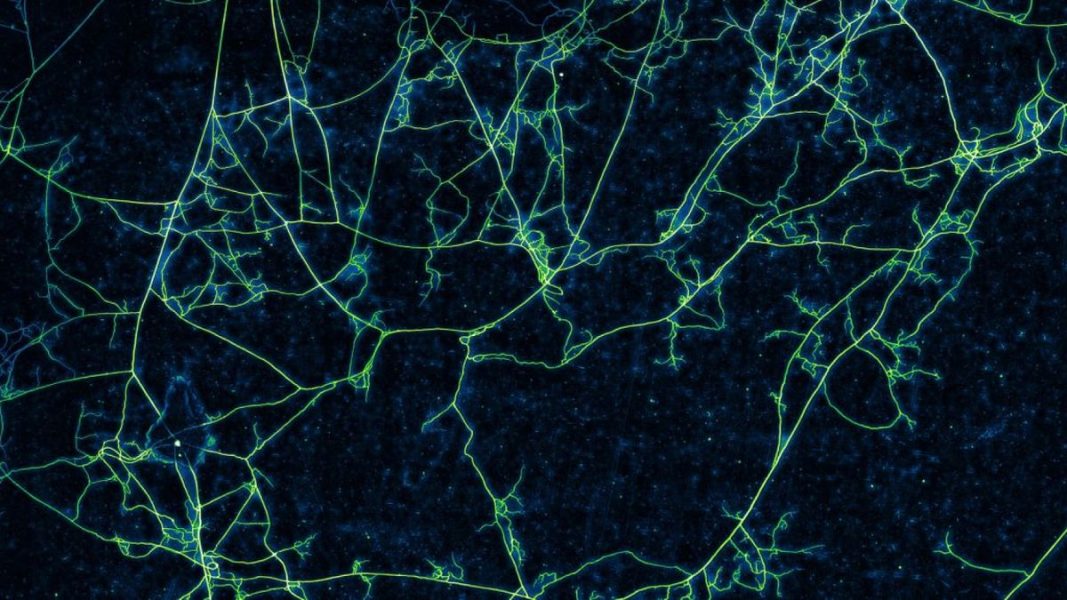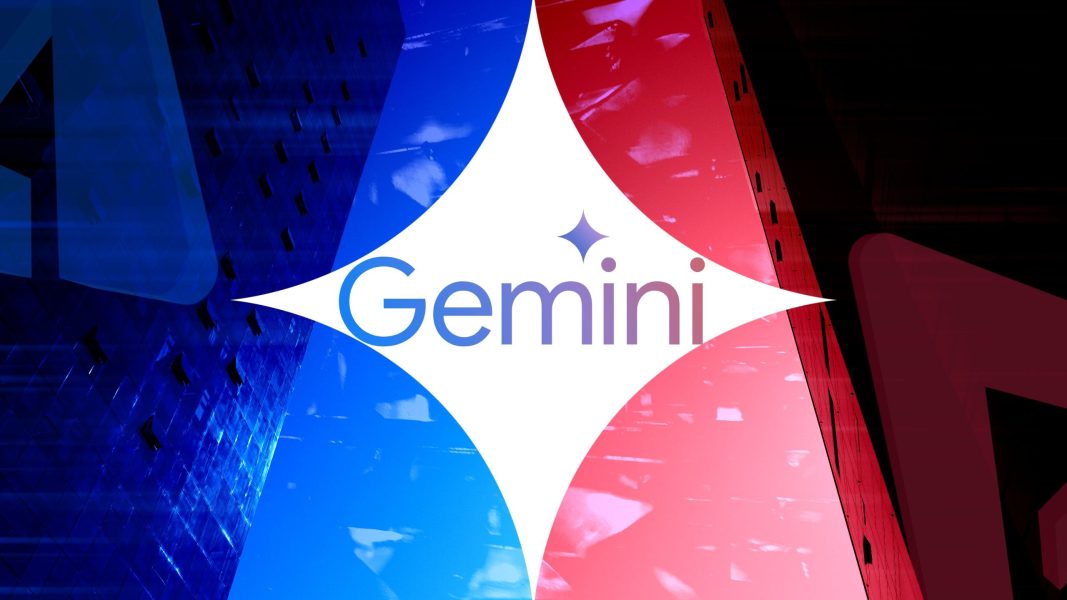Lunar New Year: Family, food and colour as millions celebrate Year of the Snake – BBC.com

The Year of the Snake is here – and millions across Asia and the world are welcoming it, with family, friends, prayers and plenty of foodThe Lunar New Year, which coincides with the first new moon of the lunar calendar, is a 15-day festival that falls between 29 January and 4 February Chinese communities, in China and elsewhere, largely consider it to be the most important festivaI of the yearIt’s also celebrated in a big way in the Koreas, Vietnam, Thailand and other parts of AsiaThe first two days of the new year is when families and friends gather for a feast, gifts in tow – and cash-filled red envelopes are a common sightRead on to find out how to wish people luck and happiness depending on where you are – and also what dishes to look out for! This video can not be playedWatch: Hong Kong residents make wishes for Year of the SnakeEdited by Fan Wang in Singapore, with contributions from BBC reporters in Beijing, Hong Kong, Taipei, Bangkok, Manila, Singapore, Sydney and Seoul.It’s time for us to go for our own family reunion dinners as the Year of the Snake officially sets in!We hope we were able to paint you a picture of how Lunar New Year is celebrated in various countries across Asia as well as among Asian communities in the rest of the world. Coverage today was brought to you by BBC reporters from Singapore, Beijing, Seoul, Sydney, Bangkok, Hong Kong, Manila and Taipei. And from all of us – a very Happy Lunar New Year!Hyunjung KimBBC KoreanThe
Lunar New Year holiday in South Korea brings families and relatives together to
exchange gift money and well-wishes – but some of those well-wishes are less
than welcome. Sometimes, they are downright nagging.The “Holiday Nagging Menu” first appeared on social media years ago, consisting of unsolicited advice
and questions commonly asked at the New Year gatherings: “Where do you stand in your class?”, “Which university are
you aiming for?”, “When are you going to get a job?”, “Shouldn’t you be married
by now?”, “You should lose some weight.”, “What’s your annual salary?”, “Isn’t
it time to have a baby?”Such irksome questions have become such a common gripe that some young people have put a price on them – a subtle plea to just keep those comments to yourself.Experts note that South Korean society has
rigid age-based milestones, and these questions highlight the pressure to conform to a “normal” life, with expectations imposed at every stage. During this traditional holiday, there is a
tendency to try to “catch up on neglected adulting”, leading to advice-giving. Unfortunately, these words often fall flat as everyone returns to their
fragmented, modern lives after the holiday.Maura FogartyBBC News, SingaporeFor many in the Vietnamese diaspora, Tết is a time to reconnect with family and tradition – cheerful decorations, lots of food and family gatherings.In my childhood home in Southern California, where there is a large Vietnamese-American population, there would be graceful arrangements of pussy willow, with their fluffy, white buds that felt silky to our touch. They represented the arrival of prosperity. Hanging tantalisingly off these branches, were little red packets filled with money. My siblings and I would try to guess how much money they contained and eagerly await our chance to get one. Because Tết always fell within the first two months of the year, it felt like a second Christmas. Sylvia ChangBBC ChineseChina’s New Year’s Gala is an iconic TV show that airs on New Year’s EveThis Lunar New Year is the first to be celebrated since the Spring Festival was added to Unesco’s Intangible Cultural
Heritage list in December 2024. This has drawn global attention to its cultural
significance.However, some in China are questioning whether modern-day celebrations in the country still hold
the charm and tradition they once cherished – and whether other countries are now celebrating it “better”. On Douyin, the Chinese version of
TikTok, the hashtag “Chinese Spring Festival is the world’s festival” has gone
viral, reaching over 11 million views by Tuesday, according to data analytics
firm Newrank.A popular video showcases dragon
dances in Paris, people in traditional Chinese attire celebrating in Mexico,
and fireworks lighting up the night sky in Germany.Yet, many in China feel the
festival’s traditional spirit is fading. The use of firecrackers has largely
been banned due to environmental restrictions, with some arguing it’s no longer
the “real” Spring Festival.“It feels like the world is
celebrating, just not in China”, one user said.There are also complaints about
the New Year’s Gala, an iconic TV show aired on New Year’s Eve. Critics argue
the show has lost its appeal, with some suggesting it now prioritises
presenting China’s image to the world over entertaining domestic audiences.“The Spring Festival goes global,
but we’ve lost touch with our own roots,” one comment read. “The Gala is made
for the world, not for us.”Stephen McDonellChina correspondentIn recent times China’s internet censors have staged an annual crackdown to maintain “a harmonious online atmosphere” during the new year period.In the past this has focused on stamping out “gloomy sentiments” related to the Covid-19 pandemic or stamping out what may be considered “ostentatious displays of wealth”.This year the Cyberspace Administration of China has come up with a new list of what they will be targeting in online discussion over the coming weeks – with one item standing out.You will be in trouble if you “deliberately exaggerate and advocate topics such as non-marriage and non-childbirth”.The country’s declining birth rate has clearly become a sensitive topic.Interestingly, the big New Year’s Eve television gala has often featured skits looking at this very topic – showing for example the perennial bachelor son visiting his hometown for New Year and getting hilariously grilled by his parents who, as it turns out, have invited one of his former (single and female) classmates over to visit. But in 2025 this is no longer a laughing matter.If you go home, get hassled by the relatives for not having married or produced heirs yet, are you not even allowed to hit social media and start ridiculing the entire experience?The extent to which this will really be policed remains to be seen though. The official announcement was pretty vague in nature and that’s the way the authorities like to keep things here.People skate in carts on a frozen lake in BeijingThe Mongolian Lunar New Year, or Tsagaan Sar, is typically celebrated on the first day of the Mongolian lunisolar calendar. This year, Tsagaan Sar will take place on 1 March – more than a month after other parts of the region celebrates their Lunar New Year. There are elements in Tsagaan Sar that are similar to other Lunar New Year traditions, such as eating and drinking auspicious food, visiting family members and preparing for the event weeks in advance by cleaning their houses. But there are also some distinct differences. Mongolians typically worship at ovoo – stone heaps used as altars or shrines. They also exchange snuff bottles, which are thought to unite people.Jean MackenzieSeoul correspondentOne quirk of the Lunar New Year in South Korea, that often bemuses westerners, is the giving and receiving of cans of spam, which historically has been considered a delicacy here.Spam was introduced to Korea by the US during the Korean War, when many were struggling and starving. It was one of the few sources of protein people could get hold of.Giving spam today is sign of respect, and one that comes with a conveniently long (and thus appreciated) shelf-life, though its popularity is waning slightly.Tzu-wei LiuReporting from TaipeiTaiwan is having its second-longest Lunar New Year holiday in 2025, spanning nine days from 25 January to 2 February. The break includes two weekends, with one make-up workday scheduled for 8 February.The longest holiday in recent years was 10 days in 2023.Lunar New Year is Taiwan’s most important festival. Public holidays typically run from New Year’s Eve to the third day of the lunar calendar, with additional days added by combining weekends. The standard holiday duration usually ranges from 6 to 9 days.In 2019, the Executive Yuan introduced a rule designating the working day before Lunar New Year’s Eve as a public holiday. This adjustment means the holiday period often begins on the 29th day of the lunar calendar, facilitating homecoming travel across the island.The extended holiday is also seen as an economic incentive, encouraging tourists to visit local attractions.However, more Taiwanese seem to prefer traveling abroad. This year, on 25 January alone, over 40,000 passengers departed from the island’s Taoyuan International Airport Terminal 1, setting a new record. Popular destinations include Japan, South Korea, Thailand, and Hong Kong.In Shanghai, dogs also have their share of good food to usher in the Lunar New Year.This video can not be playedWatch: Shanghai Dogs enjoy Lunar New Year feastThu BuiReporting from BangkokA woman wrapping banh chung rice cake in the yard of her house on the outskirts of HanoiLunar New Year, or Tết Nguyên Đán (Tết), is Vietnam’s most important celebration – a time to honour ancestors, cherish family, and welcome new beginnings.This year, it lasts from 28 to 31 January.Traditional foods are at the heart of Tết celebrations. Families come together to make bánh chưng (square sticky rice cakes) and bánh tét (cylindrical sticky rice cakes), filled with mung beans and pork. These iconic dishes reflect Vietnam’s cultural heritage and the joy of cooking and sharing meals with loved ones.Beyond family traditions, Tết is also a time for strengthening relationships – especially in government and business circles. Many take the opportunity to present valuable gifts to their bosses in hopes of career advancement or personal favors. To curb this, the government repeatedly bans gift-giving among public officials, but enforcement remains a challenge.Tết typically falls at the end of January or early February, aligning with the Communist Party’s anniversary. This has led to the slogan “Mừng Đảng, Mừng Xuân” (“Celebrate the Party, Celebrate the Spring”).However, some argue that the Party – being a manmade institution – should not take precedence over Spring, a natural phenomenon. In response, the wording was recently adjusted to “Mừng Xuân, Mừng Đảng” (“Celebrate the Spring, Celebrate the Party”).Thanyarat DoksoneReporting from BangkokIn Bangkok’s Chinatown, Mongkon Kamalwat temple, known among the locals as Wat Leng Noei Yi, is bustling with throngs of worshippers who come to seek blessings from the Chinese deities. Built in 1871 by a Buddhist monk to spread the Mahayana sect of Buddhism, the temple has remained an integral part of merit-making ceremonies for the country’s Thai-Chinese communities. Worshippers, mostly dressed in red tops, stood in long lines to pray to the gods, some carrying bags of offerings such as oranges, garlands, and rice grains.This year, due to seasonal air pollution, most temples have banned incense and candle lighting to avoid exacerbating the problem.Sylvia ChangBBC ChineseThis Lunar New Year, the “fashionable aunt” is becoming a celebrated icon among some Chinese social media users as a symbol of
independence and defiance of stereotypes.A “fashionable aunt” is seen as someone who is poised, confident, and unafraid to break societal norms – including the expectation to marry and have children early.The term went viral recently, with
millions of views and discussions, according to data analytics firm Newrank. It first appeared on the social media platform Xiaohongshu in late 2022.In a society where unmarried women
in their late twenties are often labelled as “leftover women”, family
gatherings during the Spring Festival can be fraught with uncomfortable
questions about private lives. For many, the fashionable aunt” offers a
refreshing alternative. “I still remember my single aunt,
a stylish business manager in Beijing, who was fashionable and beautiful. She
was always calm and confident when relatives pressured her about marriage. Her
calm smile inspired me to face challenges with grace,” one 17-year-old posted.However, some critics argue the
trend risks creating a new stereotype. “True independence isn’t about
being fashionable. It’s about staying true to yourself,” according to one post.Iris ZengReporting from SydneyThese lion dancers delighted onlookers in SydneyUnder a traditional gate in Sydney’s Chinatown, a skilful
lion dance performance shakes to the beat of drums and cymbals.Lifting the costume, three young dancers emerge, led by
Shifu [Master] Edison. He says: “We sweat a lot, especially during the
summer. We love doing it.”Fellow participant Alex, who has been dancing since age
five, says, “You have to use all parts of your body. Footwork definitely helps –
but all together, it makes the lion come alive.”Sydney’s 19-day
celebration draws on many influences and will see festivities ranging from a
dragon boats festival to a Korean dancefloor.“I’m from Malaysia
of Chinese heritage,” City of Sydney Councillor Robert Kok tells the BBC. “This
is the most important cultural day for my community and for me personally, as
well.”Koey Lee and Joyce LeeBBC Chinese, in Hong KongAs families gather for holiday celebrations, many elderly Hong Kongers face a quieter festival alone.”I used to spend days preparing for the New Year feast,” said Ah Chu, 78. The empty chair at her dinner table is a common sight across the city, where thousands of elderly parents have been left behind in a wave of migration.Three years ago, Ah Chu’s daughter moved to Britain, changing what was once a busy family gathering. “Now, there’s no point in buying festive decorations or preparing elaborate meals,” she said.The political turbulence following protests and the National Security Law has reshaped Hong Kong’s demographic landscape. Government data reveals a startling 60% increase in elderly living alone over the past decade, with over 188,000 seniors now in solitary households.Local NGOs report that 80% of these “left-behind elderly” face severe social isolation, with seven in ten showing signs of depression. Community centres have stepped in to help, organising group activities like hotpot dinners.”Having others around makes the holiday bearable,” said Mrs Lee, 73, who found comfort in these gatherings after her daughter’s departure. “We’re all learning to cope with this new normal.”Ah Chu’s daughter moved to Britain three years agoTessa WongAsia Digital ReporterWhile the Lunar New Year is usually a time of celebration, in recent years it’s become the subject of bitter arguments online – over its English name.The festival is celebrated by several ethnic communities across the world, where it is known as Chunjie (Chinese), Seollal (Korean) and Tet (Vietnamese), among other names. In English, it is commonly referred to as Lunar New Year, after the lunisolar calendar that many of these communities traditionally follow.But there’s been an online campaign to call it Chinese New Year, led by some Chinese. They argue that the festival, and many of its traditions, originate from China and calling it something else disrespects its cultural roots. “The [erasure] of ‘Chinese’ from the festival’s name diminishes its cultural significance,” wrote one campaigner, external on Xiaohongshu, also known as RedNote.In turn, others have argued that Chinese New Year is not a neutral term and would be disrespectful to Koreans, Vietnamese, and other communities that celebrate the festival.Both sides accuse each other of “cultural appropriation”. It’s a fight that will likely see no happy resolution for now.Chinese communities see an abundance of red during Lunar New Year as the colour symbolises good fortune and joy in their culture. Hanging red banners and donning red clothing is believed to be a way of warding off nian, an underwater man-eating monster in Chinese mythology, who rears its head at the turn of the year. Folklore has it that nian attacked all homes in a Chinese village, except one that had red decorations on its exterior.In South Korea, the colour white represents purity and a clean start to the new year. While the Chinese elders hand out money in red envelopes, many South Koreans use white envelopes.White is the theme colour for Lunar New Year celebrations in South KoreaRed symbolises good fortune and joy in Chinese cultureStephen McDonellChina correspondentThis snake is especially zen looking, what with it being pictured in a monk-like poseSome might think it difficult to make a snake look cute but, whether it be stuffed toys, little statues or posters going up on walls – grinning, even cheeky looking serpents are appearing all round China.Snakes are being portrayed as docile and chill or just straight up hilarious.I’ve not seen attempts to make them fearless or frightening in the way these cold-blooded animals sometimes appear in popular culture around the world. Instead, these are party snakes, easing everyone into the new year with a kind of happy-go-lucky everything-is-going-to-be-alright aura. So, slide into the snake vibe and have a sssensational year, especially if you’re one of them being born in 2013, 2001, 1989, 1977, 1965, 1953, 1941 or 1929.While this snake just looks thrilled to be hereDays before Tet – the Vietnamese Lunar New Year – families will gather for the time-honoured tradition of making glutinous rice cakes, an affair that often lasts through the night.These wrapped cakes, known as banh chung, are stuffed with sticky rice, beans and pork belly, and must be boiled for 12 hours over a wood fire before they are ready to eat. The delicacy is enjoyed by the living and the dead – placed on altars as an offering to ancestors – during the week long Tet holiday in Vietnam.Happy Lunar New Year to those are celebrating! And to those who are just joining us in the UK, good morning!Together with our teams across Asia, we have been watching Lunar New Year celebrations across the continent.Here is what you need to knowThousands waiting to board a train at Shanghai’s Hongqiao Railway Station ahead of the Lunar New YearLunar New Year is always a busy travelling season for those who celebrate.An estimated 9 billion domestic trips will be made across China this year – in what will be the world’s biggest annual mass migration.The 40-day travel period, known as Chunyun, is typically the one time a year many in China get to travel home to see their family. Even though Chinese New Year only begins on 29 January, many leave for their hometowns as early as 14 January, hoping to avoid the paralysing traffic jams and chaos that inevitably springs up each year closer to the date.This year, car journeys are expected to make up some 80% of all trips, followed by train and air travel. Last year’s Chunyun period saw some 8.4 billion domestic trips made across the country. In South Korea, over two million passengers are expected to pass through the country’s airports over a nine-day holiday period, which is longer than the usual three days.While in the past people would return to their hometowns for family gatherings, more South Koreans are now opting for overseas adventures.However the surge in outbound travel is concerning for local businesses hoping for a holiday spending boost. Domestic consumption is likely to drop, and there are concerns that this may deepen the country’s tourism deficit.Additional reporting from Hyunjung Kim in Seoul© 2025 BBC. The BBC is not responsible for the content of external sites. Read about our approach to external linking.






